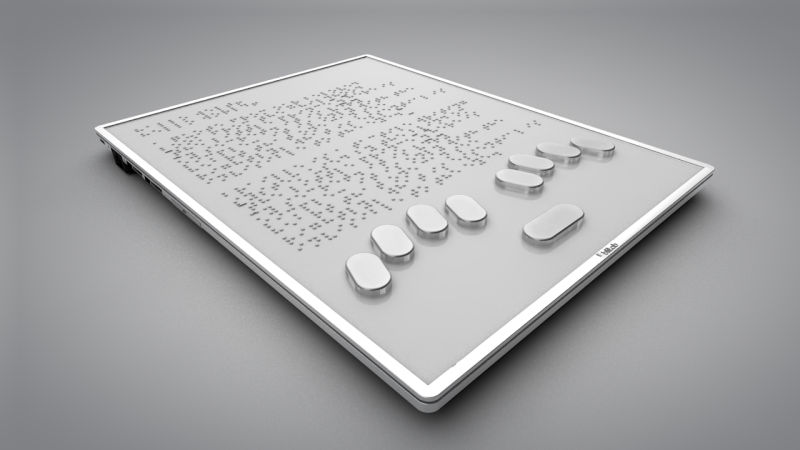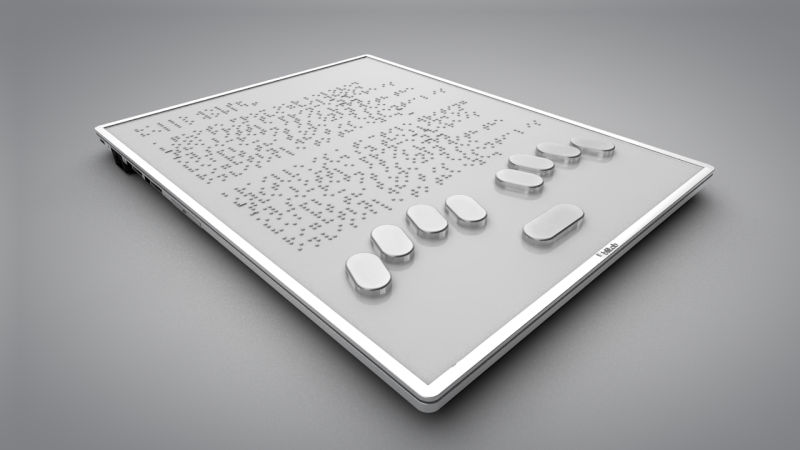Blitab is the world's first tablet for blind people
Blind and visually impaired people can browse the web with responsive braille


Blind and visually impaired people can browse the web with responsive braille
The irresistible force paradox – the question of what happens when an unstoppable force meets an immovable object – has been floating around the world in some form or another since third-century China. Until now the standard response has rightly been a shrug and “Well… nothing, I guess”. But, after 1,700 years, an Austrian company has moved the goalposts and gone home with the ball.
Blitab’s responsive braille tablet for the visually impaired has taken the unstoppable force of tech advancement and the seemingly-immovable obstacle of lost or diminished vision, smashed them together, and come up with – not a shrug, not even a grunt – a solution.
“Visual display units are the heart of all modern communication and information systems including the Internet,” say Blitab who are looking to make the digital universe a less alienating place. “BLITAB will make the world more accessible,” they claim. The technological panacea in question is that, instead of using a conventional screen, Blitab displays small physical bubbles that rise and fall on demand, composing a whole page in Braille code without any mechanical elements.
Plus, beyond the benefits of, you know, being able to read and write more than one line at a time in an age where information is more or less relentless, the application of Blitab technology also extends to not getting lost IRL.“A standalone GPS positioning system that navigates and guides blind users to any place they what to reach.”
While Blitab do want financial contributions, they also want to build more than their product – “a global community of scientists, developers, advocates, designers, translators, artists, and more” – to create a level digital playing field.


